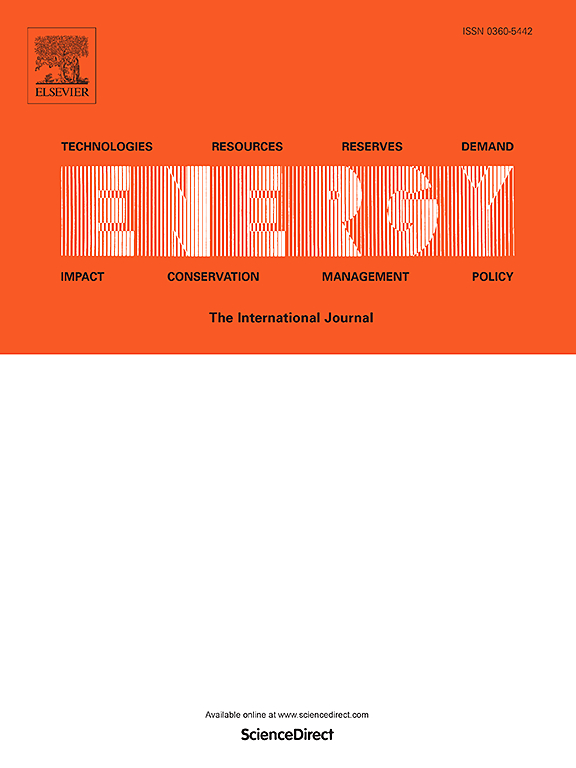Investigation of the flow mechanisms in an axial fan with casing treatment at different Reynolds numbers
IF 9
1区 工程技术
Q1 ENERGY & FUELS
引用次数: 0
Abstract
This study investigates the effects of Reynolds number () and axial slot casing treatment (ASCT) on the performance and internal flow mechanisms of a single-stage fan using a validated numerical method. The effect of and ASCT on the performance of the fan are studied. A dimensionless loss analysis method based on the first law of thermodynamics is adopted to quantitatively assess the flow loss inside the fan. The results show that there are significant differences in the flow field and efficiency at different due to differences in the boundary layer thickness and the spanwise separation degree. The difference between the boundary layer and secondary flow losses is the main reason for the efficiency discrepancy at different . The thicker boundary layer at low and the more severe secondary flow make the loss caused by the velocity gradient more significant. The broadening of the stall margin is attributed to the bleed and injection of the secondary flow caused by the recirculation of the ASCT. The ASCT has a significant effect on the inner loss of the rotor but no obvious effect on the stator. The source distribution of the loss is almost unaffected by the ASCT.
求助全文
约1分钟内获得全文
求助全文
来源期刊

Energy
工程技术-能源与燃料
CiteScore
15.30
自引率
14.40%
发文量
0
审稿时长
14.2 weeks
期刊介绍:
Energy is a multidisciplinary, international journal that publishes research and analysis in the field of energy engineering. Our aim is to become a leading peer-reviewed platform and a trusted source of information for energy-related topics.
The journal covers a range of areas including mechanical engineering, thermal sciences, and energy analysis. We are particularly interested in research on energy modelling, prediction, integrated energy systems, planning, and management.
Additionally, we welcome papers on energy conservation, efficiency, biomass and bioenergy, renewable energy, electricity supply and demand, energy storage, buildings, and economic and policy issues. These topics should align with our broader multidisciplinary focus.
 求助内容:
求助内容: 应助结果提醒方式:
应助结果提醒方式:


